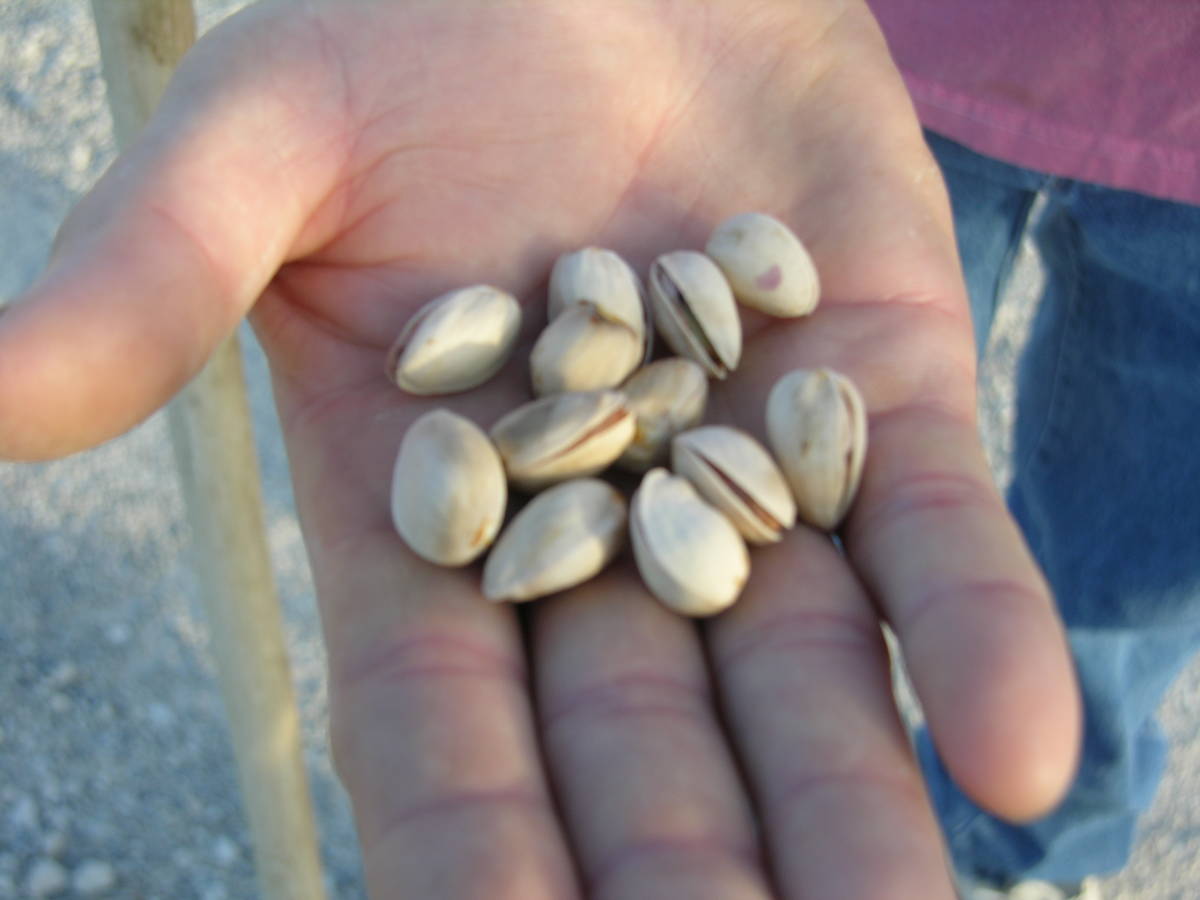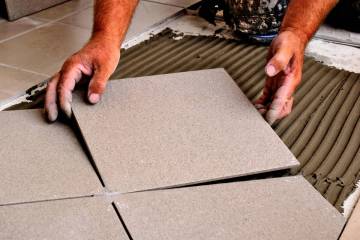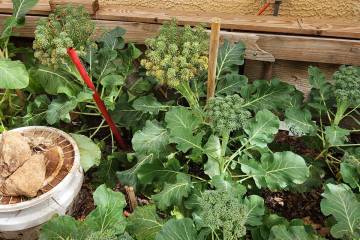Desert climates with low humidity like Las Vegas have less plant diseases
Fungicides, unlike most insecticides and weed killers (herbicides), protect the new growth of plants and keep diseases from starting or spreading. Because the disease doesn’t occur, you may not be convinced it did any good.
We collectively use the term “fungicide” to describe any pesticide aimed at preventing disease from fungi, bacteria, virus or mycoplasma-like organisms. Most diseases are caused by fungi, but there are a few, like fire blight, which are caused by bacteria and others like ash yellows or ash decline caused by mycoplasma-like organisms.
Desert climates like ours have low humidity, so plant diseases aren’t frequently seen unless we do a poor job choosing plants for the landscape spots, planting, watering or managing them. Agriculturally, Las Vegas is isolated, and that also works in our favor. We have far fewer fruit and vegetable diseases here than in agricultural hot spots.
What can you do to prevent plant diseases? Clean and disinfect tools and equipment. Whether you are doing it or someone else, make sure these tools are clean and sanitized.
Make sure the supplies you are using are clean. Clean any used pots and containers with bleach and let them air dry for 24 hours before reusing them.
Don’t compost diseased plant parts or reuse them. Instead, securely wrap them in plastic and put them in the garbage.
If the disease is known to be virulent such as fire blight, get diseased plant parts off the property as soon as possible. Thin out dense plants to improve air movement through their canopies. Whether you are growing tomatoes, fruit trees or shrubs, when they are dense they need to be thinned by selective pruning and growing vigorously to prevent diseases.
Q: Is it too late to plant new plants?
A: No, it is not too late. The ideal time for planting is in the fall and spring. No one argues that. That’s when I encourage people to plant. Late fall and winter are not the ideal time for planting, but you can still plant. When planting, always avoid the intensely hot summer months.
It is always better to plant in the ground rather than wait for a better time. Just make sure the planting area is suitable for the plant. Plants do not establish their roots in soil as quickly when the soil is cold. One growing season is all that is necessary when staking most new plants.
Know your plant’s ancestry. If its genealogy is the Mediterranean region or arid parts of the world, it most likely performs best with wood chips covering the soil surface rather than rock. Plants originating from the desert Southwest tolerate rock and poor soils better but don’t necessarily grow to their full potential in that type of soil.
Plants that perform best surrounded with rock mulch covering the soil surface are plants that originate from the deserts of the Southwest. If the soil is poor to begin with, covering it with rock will not improve it.
All plants perform better with additions of organics like compost mixed into the soil surrounding the roots. Some, like cactuses and succulents, require less, but they all grow better with amended soil provided there is good drainage. All plants that originate from deserts prefer soils that drain water. Plants that originate from wetter places, but can handle the heat, are usually more tolerant of wetter soils.
Q: My asparagus attempt resulted in five out of 10 crowns dying. I did as you suggested and dug down as deep as my tiller would dig — about 13 inches. For better drainage I drilled holes another 12 inches deeper and filled them with gravel. I ordered Jersey Knight asparagus and planted per the instructions
A: The usual reason for asparagus dying or growing poorly after planting is because the plants are watered too often, and the crown or roots drown. Asparagus must be planted in soils that don’t hold water. If the soil holds water easily or there is poor drainage, then consider planting asparagus crowns just below the surface of the soil and mound the soil 8 or 10 inches above it. Mounding the soil provides better drainage in heavier soil.
Don’t water deep-rooted asparagus the same as other annual vegetables. They could be watered with other perennial vegetables such as artichokes or even fruit trees or landscape trees and shrubs.
If in doubt, use a soil moisture meter with the tip inserted about 4 to 6 inches deep in the soil. Never trust a dry soil surface to tell you if the soil where the roots are growing is dry or wet. Water again when the average needle measurements register midway, or around “5,” on the moisture gauge.
Asparagus grows in the wild near the edges of irrigation ditches. But not in the ditch. This means they like to get their “toes” occasionally wet but not submerged.
These locations are similar to where palm and fig trees like to grow. I had good luck growing asparagus between fruit trees when they were young and there is enough light. When fruit trees get older and dense, it is more difficult to grow asparagus because there is less light. Move the crowns to new locations during the winter months where there are moisture and adequate light.
Adding rock beneath the crowns doesn’t help drainage at all. It’s the same story with sand. To get any kind of soil improvement requires additions of 80 to 90 percent sand above and below where the plant roots are growing. Research has not looked at gravel, but I assume it is the same.
But additions of rock above the crowns cause them to grow crooked spears. Straight spears require soil above the crowns without rocks.
In my trials over the years, all varieties of asparagus (12 different varieties) produced spears, but the longest and most saleable spears were produced by UC151 hybrids bred by the University of California, Riverside for the hot, dry desert. All the Jersey varieties, bred by Rutgers University in New Jersey, didn’t yield as well in the Mojave Desert.
You get quality spears with other varieties, but the spears must be harvested earlier than UC151, and this makes them shorter. This holds true for old-fashioned varieties like Martha Washington and most purple types.
I fertilize asparagus in midwinter with a layer of manure or compost applied once a year and watered in. You can also use a high-nitrogen fertilizer, but it will not improve the soil as manure or compost does.
Q: When should I harvest pistachio nuts from my 5-year-old tree? In October the nuts were yellowish-green with a red blush covering them.
A: The red blush is an indicator that your harvest season has arrived or perhaps even late. It’s better to look at the number of split nuts on the tree. The general time for harvesting may start as late as late August or early September and extend through the middle or even end of October.
The time to harvest is when the nut inside the husk fills the shell and can be removed. Commercial growers look at the number of split nuts on the tree and whether it might rain or not. Rain will mold pistachio nuts if they are split open.
Pistachios are grown in arid or desert parts of the world where, like dates, rain is considered a foe. When harvest time is near, nothing beats taking a few nuts off the tree to see if the meat is plump and separates easily from the shell. Drying the nuts off the tree enhances flavor, causing more of the nuts to open and the meat to separate farther from the shell.
Q: I am trying to figure out when asparagus goes dormant in the desert. I have been doing some research, but I can’t find information about how to handle the dormancy period in the desert. Any ideas?
A: The usual information about asparagus says it turns brown or goes dormant as the weather gets cold. That’s true in Michigan or Washington state. Sometimes asparagus grown in warm deserts doesn’t turn brown. It might stay green all winter long.
Wait for the coldest part of the winter, cut it down like it was brown and turn off the irrigation. In about a month, irrigate and fertilize again to push a new crop of spears. For some plants, drought can sometimes substitute for the dormancy of winter cold.
Not irrigating can trick the plant into thinking it just got through its dormant period. In the tropics, they let asparagus dry out for a month during the dry season and then start up the irrigation again. Cut it back during the coldest month, turn off the water until the soil dries, put manure, compost or fertilizer on top of the soil and then start watering again.
Bob Morris is a horticulture expert and professor emeritus of the University of Nevada, Las Vegas. Visit his blog at xtremehorticulture.blogspot.com. Send questions to Extremehort@aol.com.























